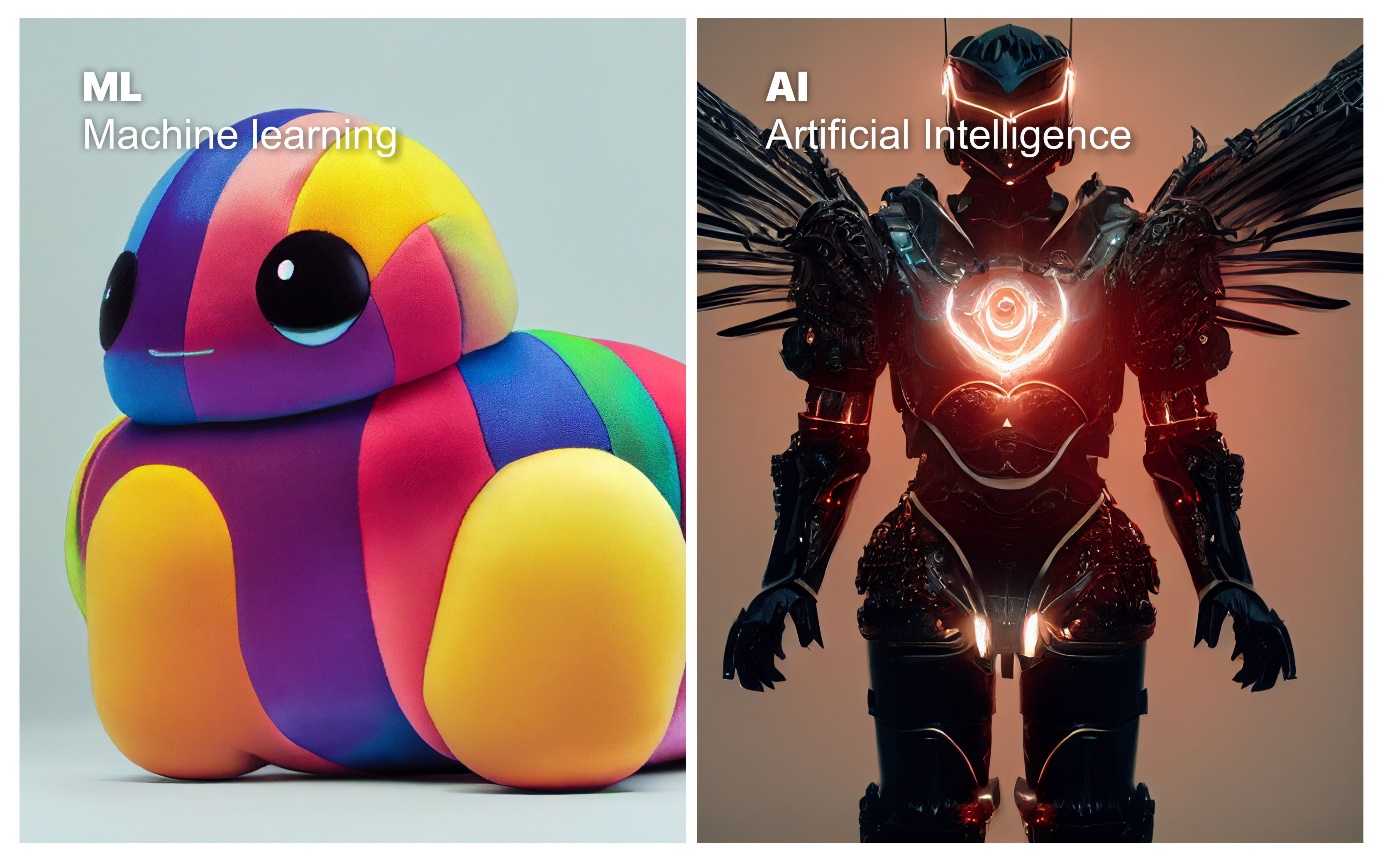Day 1: Introduction to AI and Machine Learning

Understanding the difference between AI and Machine Learning
Artificial Intelligence (AI) and Machine Learning (ML) are often used interchangeably, but they are not the same thing. AI is a broad field that involves creating machines that can perform tasks that would typically require human intelligence, such as understanding natural language, recognizing objects, and making decisions. Machine learning is a subset of AI that involves creating algorithms and statistical models that enable machines to automatically improve their performance with experience.
A simple way to think about the relationship between AI and ML is that AI is the overall goal of creating intelligent machines, while ML is a specific approach for achieving that goal. ML algorithms are used to enable machines to "learn" from data, which allows them to improve their performance over time without being explicitly programmed.
The history of AI can be traced back to the 1950s, when researchers first began exploring the idea of creating machines that could mimic human intelligence. Early AI research focused on rule-based systems that used pre-programmed rules to make decisions. However, this approach had limited success and was eventually surpassed by ML, which uses data-driven algorithms to improve performance.
The first ML algorithms were developed in the 1950s and 1960s, but the field did not gain significant traction until the advent of big data and more powerful computers in the early 2000s. This allowed researchers to train large, complex models on massive amounts of data, which led to significant breakthroughs in a wide range of tasks, such as image and speech recognition, natural language processing, and game playing.

Today, ML is used in a wide range of applications, from self-driving cars and voice assistants to healthcare and finance. The field is advancing rapidly, and new breakthroughs are being made all the time. Some of the most promising areas of research in ML include deep learning, reinforcement learning, and transfer learning.

If you want to learn more about AI and ML, there are many resources available online. Some popular online courses and tutorials include:
- Andrew Ng's Machine Learning course on Coursera
- Jeremy Howard and Rachel Thomas's Practical Deep Learning for Coders course
- The TensorFlow website
- The PyTorch website
- The Machine Learning Mastery website
- The Google AI website
It's important to note that the field of AI is constantly changing and evolving, so it's important to stay up to date with the latest developments and best practices. AI and ML are related but different fields. AI is the overall goal of creating intelligent machines, while ML is a specific approach for achieving that goal, which is by allowing machines to learn from data and improve their performance over time. The field of AI has been around for decades, and its history can be traced back to the 1950s, but the most significant breakthroughs have been made in recent years thanks to the advent of big data and more powerful computers. Today, ML is used in a wide range of applications, and it is advancing rapidly, with new breakthroughs being made all the time.
Types of Machine Learning: Supervised, Unsupervised, and Reinforcement Learning
ML can be broadly classified into three main categories: supervised learning, unsupervised learning, and reinforcement learning. Supervised learning uses labeled data to predict an output, unsupervised learning finds patterns or structure in the data, and reinforcement learning makes decisions through interaction with an environment to achieve a goal. Each type of learning has its own characteristics, strengths and weaknesses and they are used in different tasks and fields like natural language processing, computer vision, and robotics.
Supervised Learning
Supervised learning is the most common type of machine learning. It involves training a model on a labeled dataset, where the model learns to predict an output given a set of inputs. The model is then tested on a new, unseen dataset to evaluate its performance. Some examples of supervised learning tasks include image classification, speech recognition, and predictive modeling.
The key characteristic of supervised learning is the presence of labeled data, meaning the output variable is known. The goal is to learn a mapping between the input and output variable. Supervised learning can be further divided into regression and classification problems. In regression, the goal is to predict a continuous value, such as a price, while in classification, the goal is to predict a discrete class label, such as a category.

Unsupervised Learning
Unsupervised learning is a type of machine learning where the model is trained on an unlabeled dataset, with no output variable provided. The model learns to extract useful information from the data without any guidance. Some examples of unsupervised learning tasks include clustering, anomaly detection, and dimensionality reduction.
The key characteristic of unsupervised learning is the absence of labeled data, meaning the output variable is unknown. The goal is to find patterns or structure in the data, rather than predicting an output. The common unsupervised learning algorithms are Principal Component Analysis(PCA), K-means, and Hierarchical Clustering.
Reinforcement Learning
Reinforcement learning is a type of machine learning where the model learns to make decisions by interacting with an environment and receiving feedback in the form of rewards or penalties. The model learns to optimize its decision-making over time by maximizing the cumulative reward. Some examples of reinforcement learning tasks include game playing, robotics, and recommendation systems.
The key characteristic of reinforcement learning is the presence of an agent that interacts with an environment, which is intended to achieve a goal. The agent learns from the environment through trial and error, receiving rewards or penalties to improve its decision-making. Reinforcement learning is different from supervised and unsupervised learning in that the model learns from the interaction with the environment rather than from labeled data.
Make Your Business Online By The Best No—Code & No—Plugin Solution In The Market.
30 Day Money-Back Guarantee
Say goodbye to your low online sales rate!








